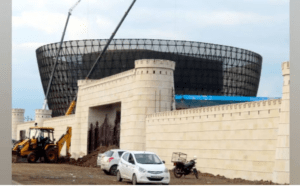Nagpur has been witnessing noticeable climate fluctuations in October so far, with high temperatures and humidity continuing unusually into the month. Residents have expressed concern about when they might experience relief from this uncomfortable weather. The city recently saw unexpected rains, adding to the unpredictability of the weather. The fluctuations are expected to continue in the coming days, leading many to speculate about the reasons behind this sudden shift.
In a bid to understand more about these changes, Nagpur Today’s reporter Vanshika Malviya spoke with Dr. Praveen Kumar, a scientist from the Regional Meteorological Centre (RMC) of the India Meteorological Department (IMD) in Nagpur. Dr. Kumar provided insights into the factors causing the unusual weather patterns.
Prolonged heat and humidity: Nagpur has been witnessing extended periods of heat and humidity. This is partly due to lingering effects of the monsoon season, which usually retreats by this time. However, the delay in monsoon withdrawal has prolonged the hot and sticky conditions.
Unexpected rains: Dr. Kumar explained that the recent rains, which caught many off guard, are a result of unstable atmospheric conditions caused by a low-pressure system. These systems are often common during the transition period between the monsoon and winter seasons but are becoming more unpredictable.
According to Dr. Kumar, the unusual weather patterns may be linked to global climate change, which is causing disruptions in typical seasonal transitions. Rising temperatures, fluctuating rainfall, and extended periods of humidity are increasingly being observed not just in Nagpur, but across the central Indian region.
The weather is expected to swing between heat, humidity, and occasional showers in the next few days. While cooler weather is expected eventually, residents should brace for continued fluctuations as the transition from the monsoon season is yet to complete. The full retreat of the monsoon and the arrival of winter may be slightly delayed this year.
Dr. Kumar noted that long-term changes in the atmosphere and sea temperatures are affecting weather patterns globally. These changes contribute to the erratic climate behaviour in Nagpur, such as the late monsoon withdrawal and unexpected heatwaves.
Residents can expect a mix of conditions over the next few weeks as the city moves through this phase of fluctuating weather. Relief may come in the form of cooler temperatures, but the exact timing remains uncertain. Dr. Kumar emphasized the need for adaptive measures to cope with these changing weather patterns, which are likely to become more frequent in the coming years.
This insight sheds light on the complex factors driving Nagpur’s current climate and offers a broader understanding of how global and regional trends are reshaping local weather experiences.

















